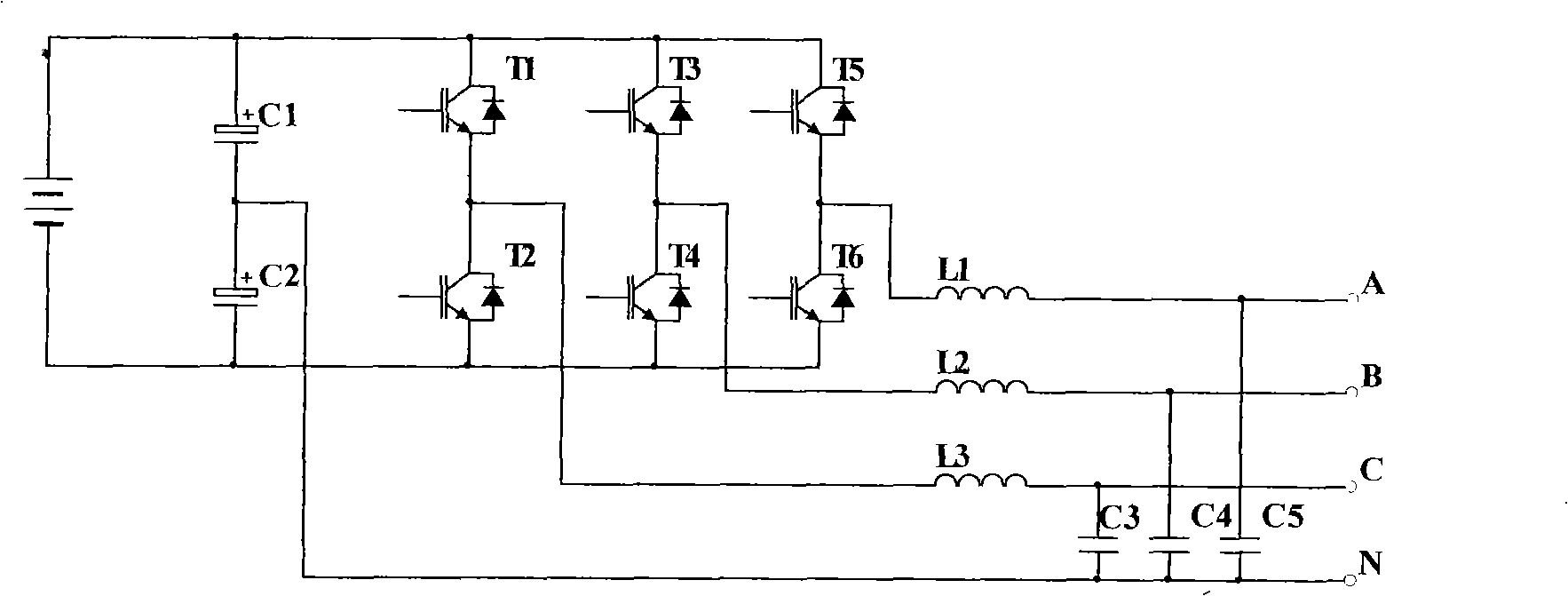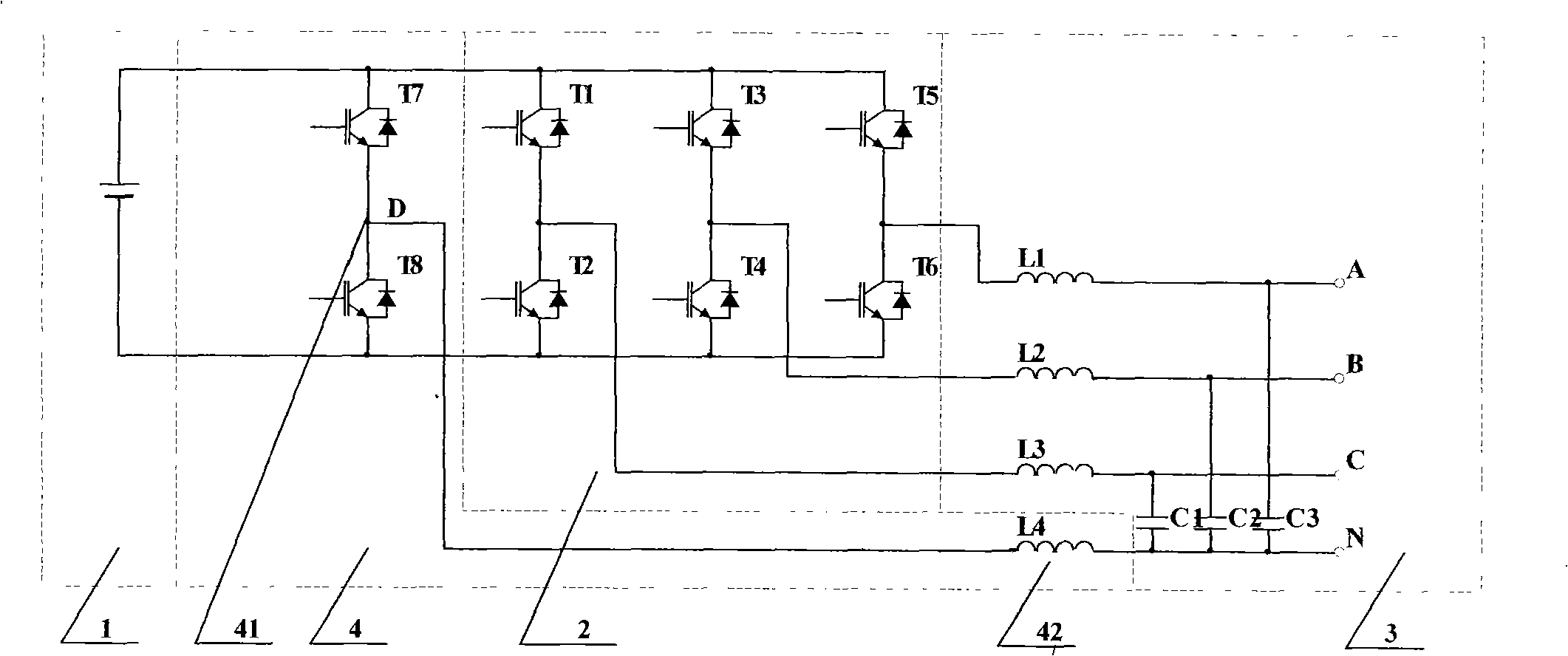Three-phase four-wire system inverter circuit
A three-phase four-wire system, three-phase inverter technology, applied in electrical components, irreversible DC power input into AC power output, AC power input into DC power output and other directions, can solve the problem of uneven output voltage, etc. problem, to achieve the effect of small changes and increased load capacity
- Summary
- Abstract
- Description
- Claims
- Application Information
AI Technical Summary
Problems solved by technology
Method used
Image
Examples
Embodiment 1
[0014] Example 1, such as figure 2 As shown, a three-phase four-wire inverter circuit includes a DC power supply 1, a three-phase inverter circuit 2, and an AC filter circuit 3. The point adjustment circuit 4 is connected between the DC power supply 1 and the AC filter circuit 3. The neutral point adjustment circuit 4 generally consists of a bridge arm circuit 41 and an inductance 42 connected to its middle point D. The other end of the inductance 42 is connected to the inverter Transformer neutral point N. The power transistor in the bridge arm circuit 41 is an IGBT, or a GTO, or a MOSFET, or a thyristor. The circuit should use higher power transistors.
Embodiment 2
[0015] Example 2, such as image 3 As shown, a three-phase four-wire inverter circuit includes a DC power supply 1, a three-phase inverter circuit 2, and an AC filter circuit 3. The point adjustment circuit 4 is connected between the DC power supply 1 and the AC filter circuit 3. The neutral point adjustment circuit 4 is composed of a bridge arm circuit 41 and an inductance 42 connected to its midpoint D. The other end of the inductance 42 passes through two equal-capacity The capacitors (C1 and C2) are respectively connected to the two poles of the DC power supply, and at the same time connected to the neutral point N of the inverter for output. C6 and C7 are small capacitors that play the role of filtering high frequencies. The power transistor in the bridge arm circuit 41 is an IGBT, or a GTO, or a MOSFET, or a silicon controlled rectifier. Since there are capacitors C1 and C2, a small power transistor can be selected.
PUM
 Login to View More
Login to View More Abstract
Description
Claims
Application Information
 Login to View More
Login to View More - R&D
- Intellectual Property
- Life Sciences
- Materials
- Tech Scout
- Unparalleled Data Quality
- Higher Quality Content
- 60% Fewer Hallucinations
Browse by: Latest US Patents, China's latest patents, Technical Efficacy Thesaurus, Application Domain, Technology Topic, Popular Technical Reports.
© 2025 PatSnap. All rights reserved.Legal|Privacy policy|Modern Slavery Act Transparency Statement|Sitemap|About US| Contact US: help@patsnap.com



